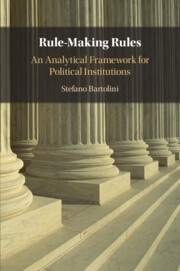Introduction
Institutions and Political Science
Published online by Cambridge University Press: 16 June 2022
Summary
Political institutions are currently seen in very different lights. In one version they are assimilated to institutions that dispense criteria for appropriate conduct and attributions of meanings. In a different perspective they are analysed as bulwarks of individual rights and protection from government in a theoretical framework that refers to modern liberal democracies and their defence of liberties. An additional image sees political institutions as regulators of individuals’ and groups’ egotistic drives in view of achieving self-enforcing equilibria that foster cooperation and help to overcome social dilemmas. In yet another framework they are identified with the organisational forms of political society. In this light, they are often viewed as forms of organisational symbolism, as ritual and ceremonial components that outweigh other dimensions to the point of swallowing any other type of institutional return. Finally, they are regarded as forms of government, as instruments of sharing or concentrating the coercive power of the political. It is likely these different views ask too much of political institutions. It is also likely that such widely diverging frameworks result from the application to political institutions of the properties of other kinds of institutions.
Information
- Type
- Chapter
- Information
- Rule-Making RulesAn Analytical Framework for Political Institutions, pp. 1 - 8Publisher: Cambridge University PressPrint publication year: 2022
